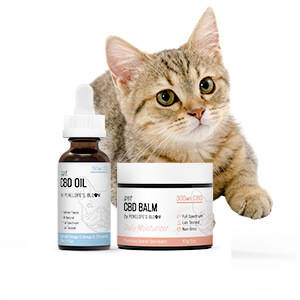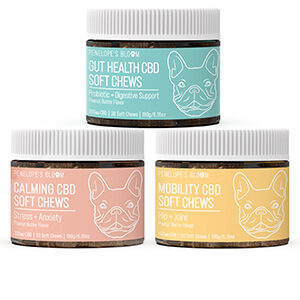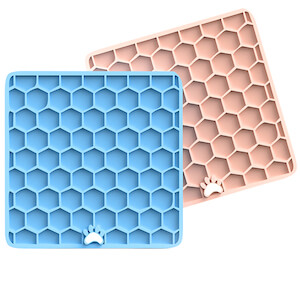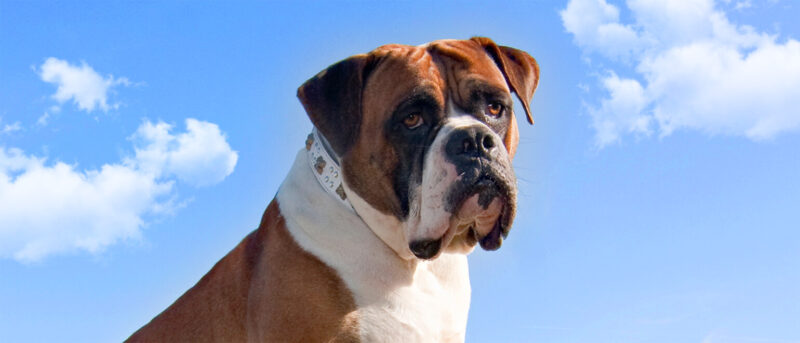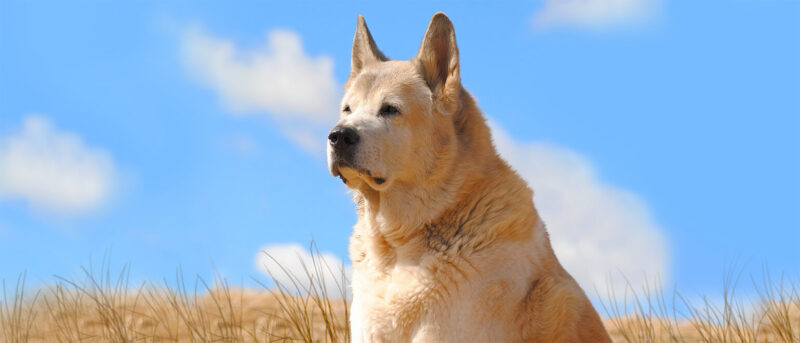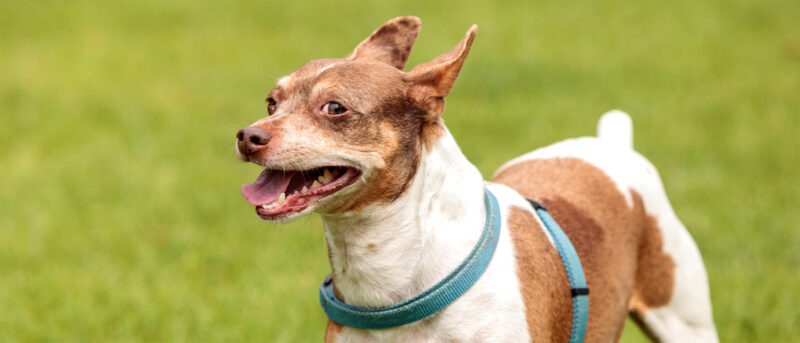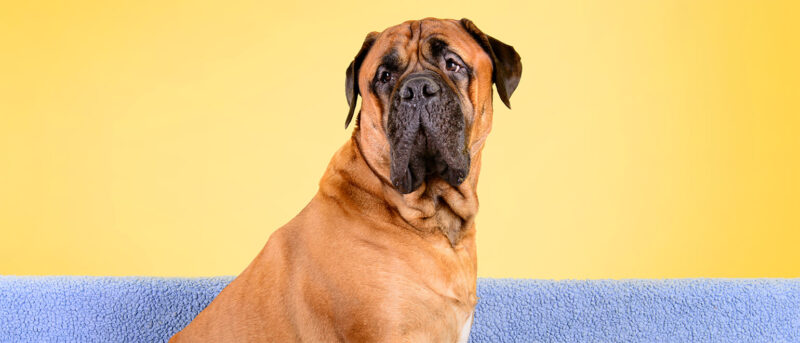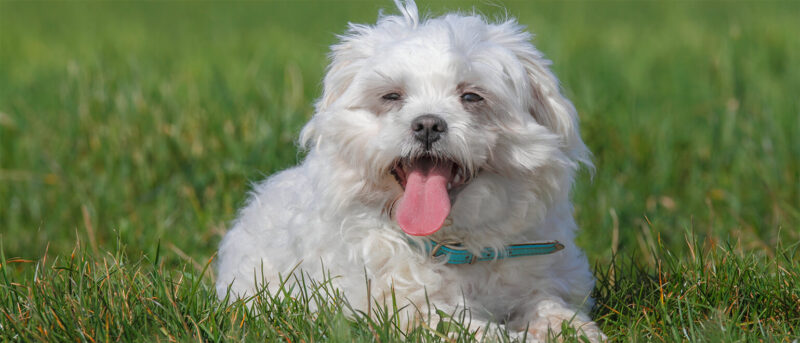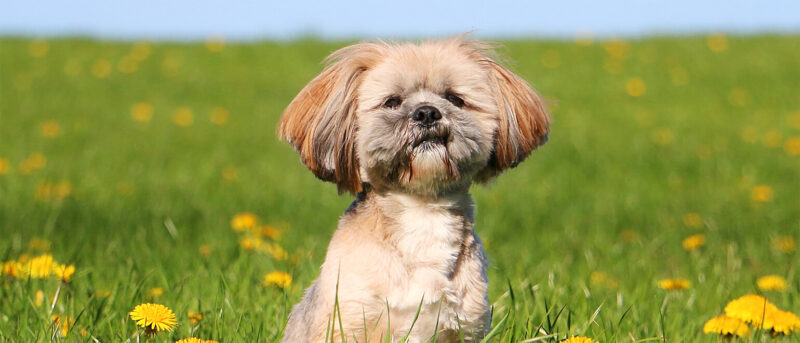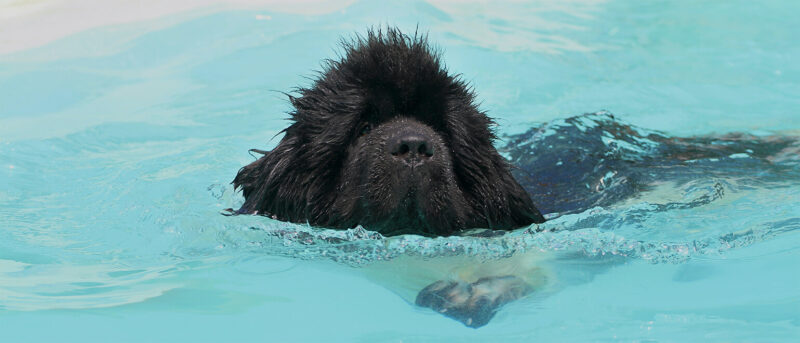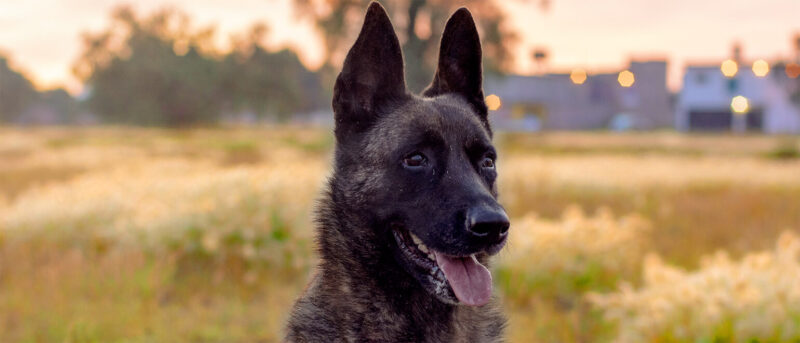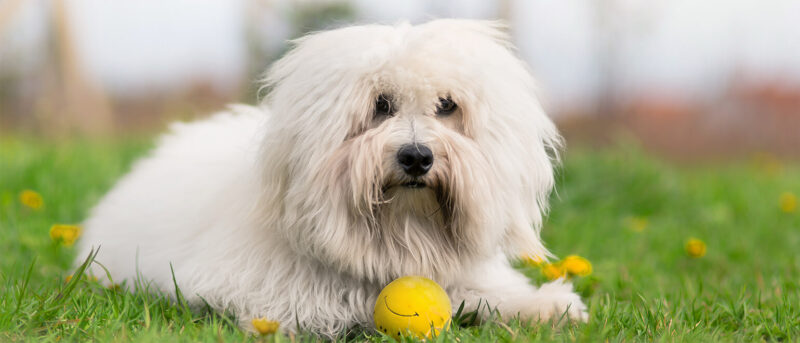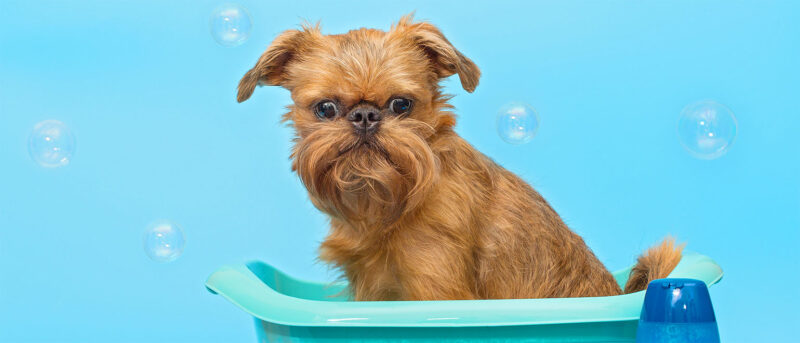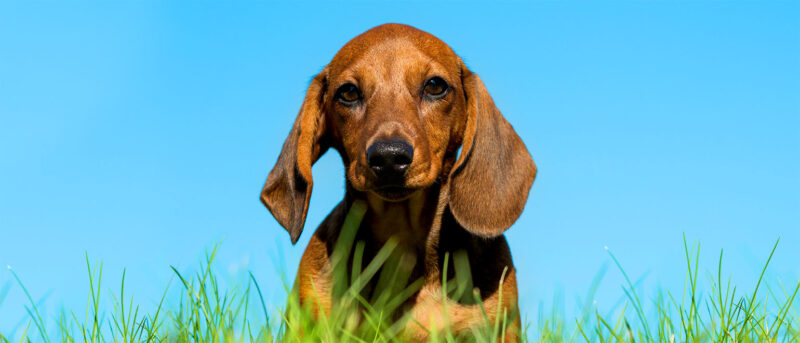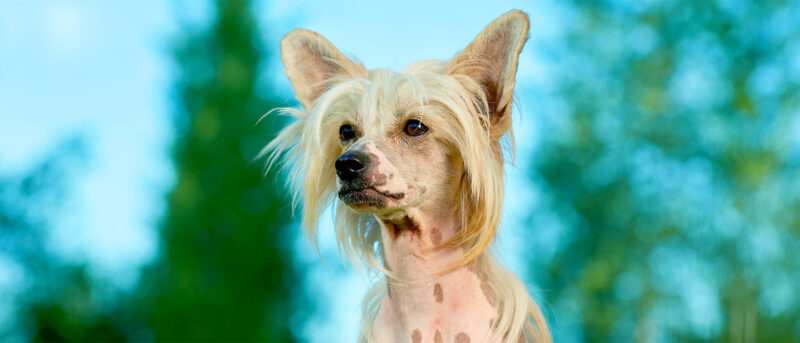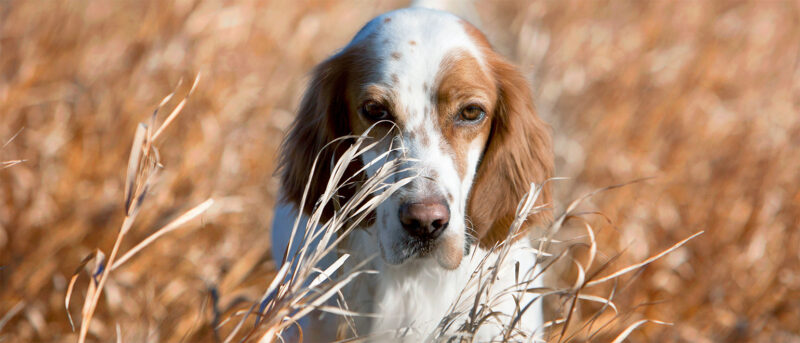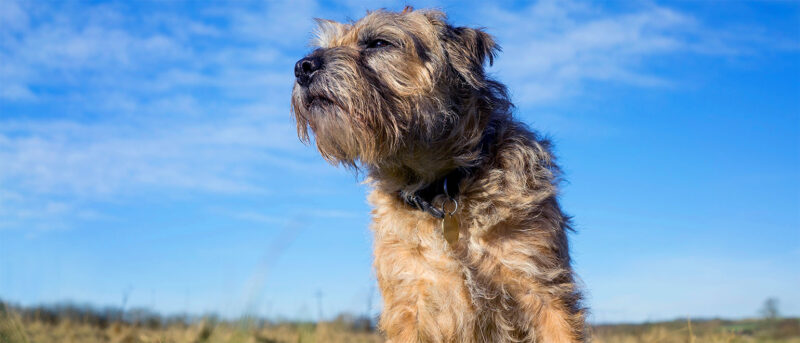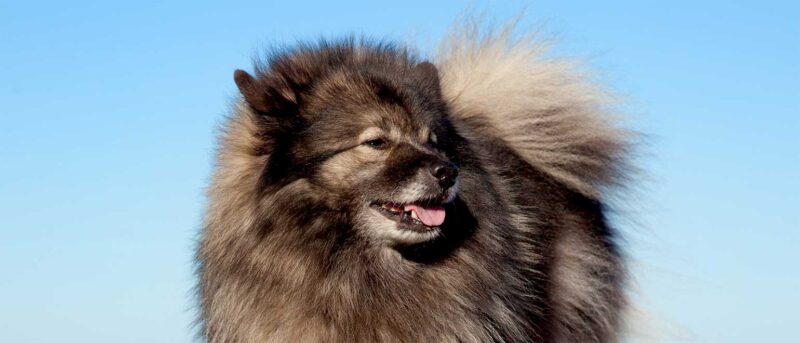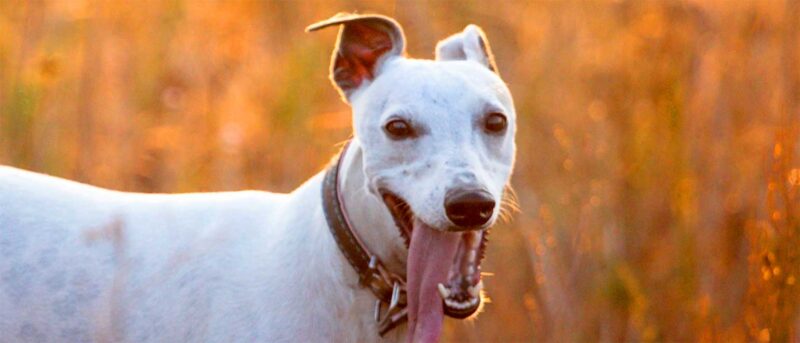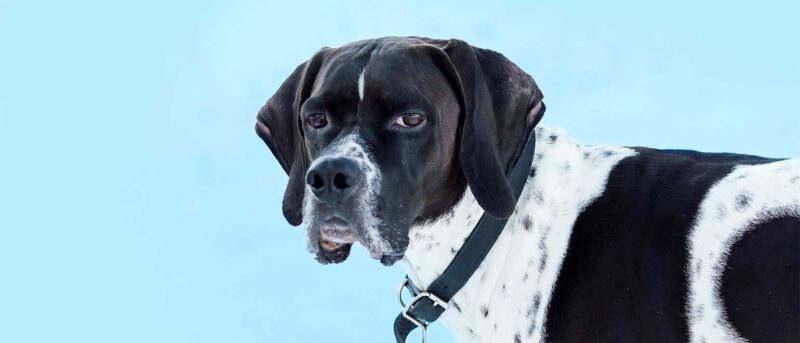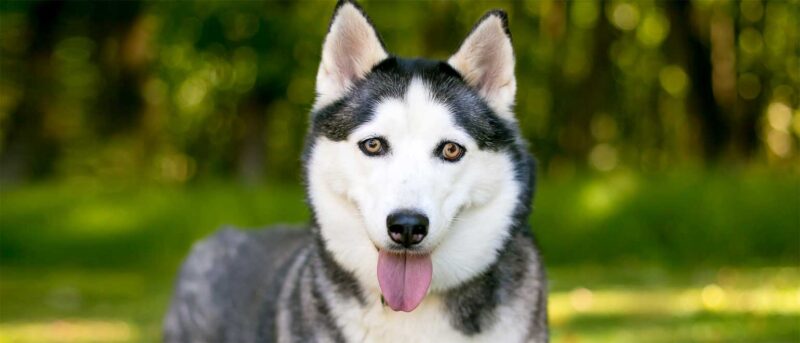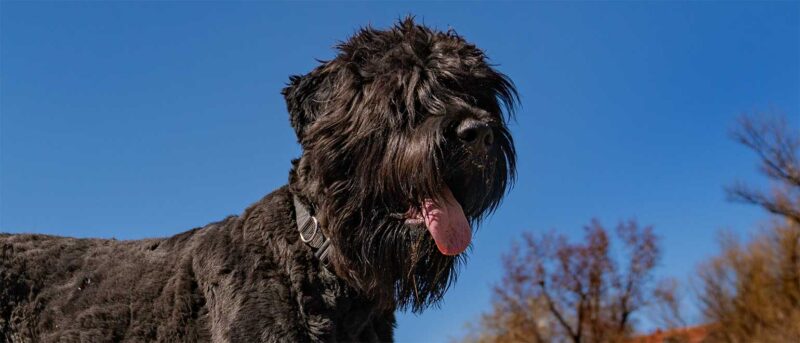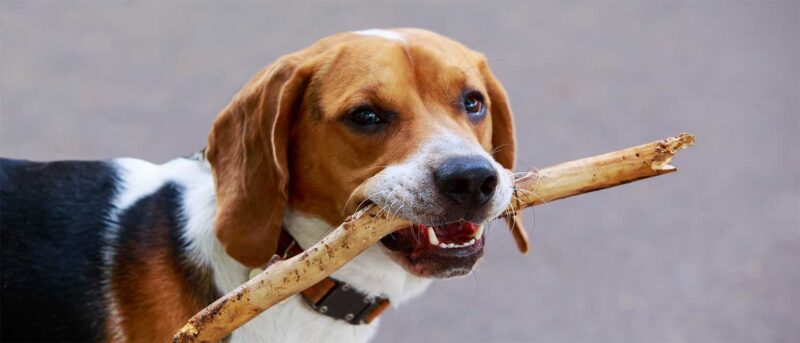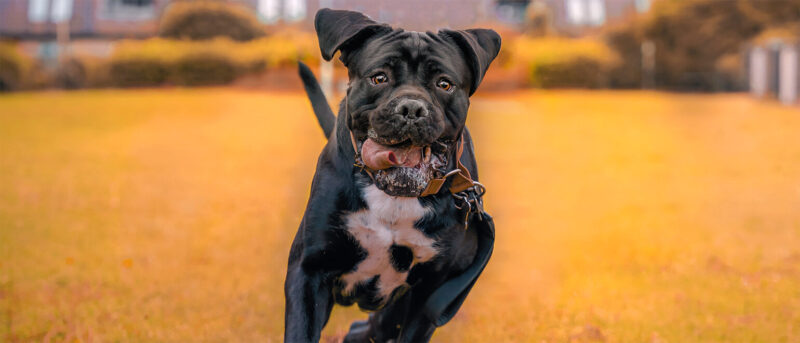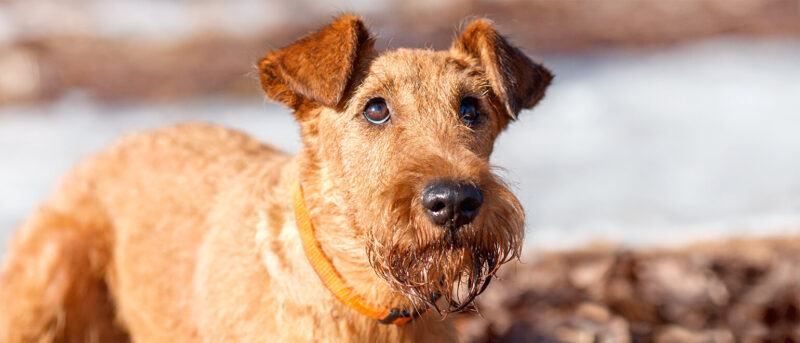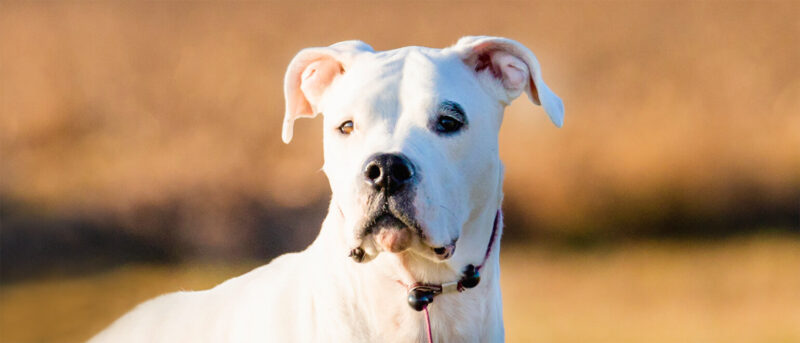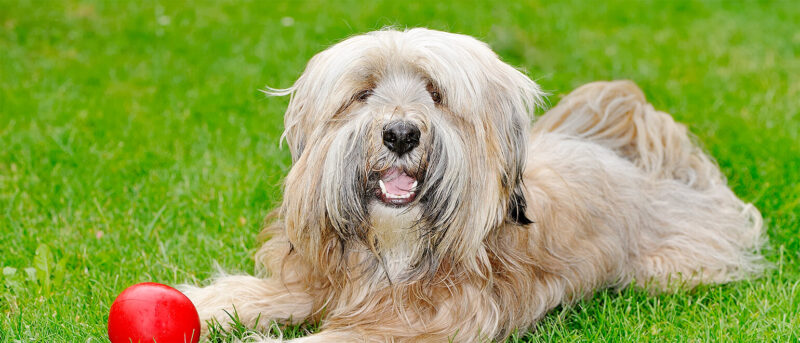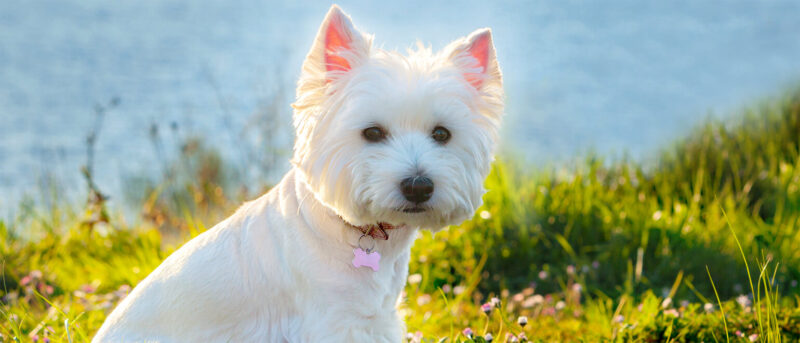Australian Kelpie: All About This Intelligent & Energetic Dog Breed
The Australian Kelpie is a dream companion for an active person. The definition of a hard-working dog, this pet is capable of completing everyday tasks while also having plenty of energy to exercise. This independent dog is also an ideal participant for dog sports! A member of the herding dog group, Australian Kelpies are used […]
The Australian Kelpie is a dream companion for an active person. The definition of a hard-working dog, this pet is capable of completing everyday tasks while also having plenty of energy to exercise. This independent dog is also an ideal participant for dog sports!
A member of the herding dog group, Australian Kelpies are used to professionally herd sheep and other livestock but also make excellent additions to families living in the city. The most important thing for these dogs is that they are placed with owners who can provide them with adequate exercise and mental stimulation.
Adopting an Australian Kelpie comes with a lot of responsibility but if you read this thorough guide from beginning to end, you’ll have a helpful advantage to becoming an excellent Australian Kelpie owner. Follow along and we’ll discuss this dog’s characteristics, exercise needs, personality traits, history, care requirements, and more!
Australian Kelpie Characteristics (Physical)
Australian Kelpies are dogs that exhibit both diligence and charm, matched only by their boundless energy. This breed distinguishes itself into two categories: Working Kelpies and Show Kelpies. Working Kelpies excel in herding livestock, while Show Kelpies are selectively bred for their aesthetic qualities and participate in canine competitions like dog sports.
Although they can be adopted for a variety of purposes, Australia Kelpies have a specific set of traits that you should look out for. The breed standards as established by kennel clubs are something any potential Kelpie owner or breeder should review. If you’re in the market for an Australian Kelpie Dog, here are the standard physical characteristics to keep an eye out for.
Head
One of the trademark traits of this dog is its long ear. This dog’s ears are pricked with soft pointed tips. The facial expression of the Australian Kelpie is reminiscent of a fox.
Australian Kelpies have deep, almond-shaped eyes that may be brown or lighter in color, depending on their coat pattern. The color of the Australian Kelpie’s nose should also match their coat color. This dog’s head should always be proportional to their body with a lean muzzle.
Body
Kelpies have a medium-length neck that is sturdy enough to support their head with ease. Their chest is typically deep and muscular. According to breed standards, the top line of the Kelpie should be firm. When it comes to their tail, it should hang in a slight curve but quickly raise when they are excited or playing.
Limbs
Thanks to their powerful limbs, Australian Kelpies can run around large open fields and rough terrain with ease. Their agile legs allow them to make sudden turns, making them one of the best herding dogs on the planet.
The Australian Kelpie’s forelegs feature sturdy, straight muscles similar to their shoulders. When observed from the front, their legs appear to be parallel. Their back legs are impressively powerful, helping them to run fast. Both their front and back paws are solidly built and round with well-arched toes.
Australian Kelpie Dog Breed Size
Although they start off adorably small, an Australian Kelpie puppy can grow up to being anywhere from 15 to 20 inches at the shoulder when they reach full maturity. Australian Kelpies don’t weigh a lot when they are fully grown either. Depending on the level of diet and exercise they receive, the typical Kelpie weighs between 30 to 46 pounds.
These medium-sized dogs don’t take up too much space, even when they’re sprawled out napping indoors. Despite their light frame, dog owners should still take precautions when walking their Australian Kelpies as they are still strong enough to pull their owner.
As with many dogs, the Australian Kelpie’s size and weight also vary between male and female dogs. It is up to dog owners to be responsible and keep their Kelpie at an ideal weight using portion control and daily exercise.
Australian Kelpie Personality
Dogs have been loved for centuries for their loyalty and affection towards people and the Australian Kelpie is no exception. These dogs love bonding with their human family, earning the title of man’s best friend.
While an Australian Kelpie puppy is adorably mischievous and curious, these little rascals do mature and develop as they go through training. Australian Kelpies are known for their endurance and a host of other distinguishing personality traits that we’ll discuss below at length.
Intelligent
Australian Kelpies are highly valued by both dog owners and livestock ranchers for their exceptional intelligence. Bred for work, they eagerly tackle tasks and strive to excel. Their high intelligence makes them notably easier to train for any task compared to other canines.
These dogs love to stay busy and require a large amount of mental stimulation. Toys like dog puzzles are an ideal way to keep the Kelpie’s intelligence sharp. Dog owners can even train their Kelpie to do more challenging things like fetching and bringing them household items, such as the morning paper or laundry.
Alert
Not only are Australian Kelpies a member of the herding dog group, they also make top-tier watchdogs due to their alertness. While it is still common to see Kelpies herding sheep in the country, professional groups also employ this dog breed to work as detection dogs, search and rescue dogs, and even therapy dogs.
When tasked with guarding property, this dog is always on alert for any unusual sights or sounds. Whether it’s a small rodent or a human intruder, they keenly detect and deter unwanted visitors. Kelpies are unafraid to bark loudly, ensuring their owners are promptly alerted to any potential trespassers.
Energetic
It’s important to understand that Australian Kelpies are high-energy dogs. They were bred to be able to handle a day’s worth of work without getting exhausted. This dog’s high energy levels make it ideal for herding farm animals, joining in on search and rescue operations, or competing in dog sports.
It’s crucial to give Kelpies various outlets for them to expend their energy. This high-octane dog is happiest with an owner who can handle their exercise needs.
Australian Kelpie Dog Breed Exercise
As you might have gathered, the greatest responsibility for caring for an Australian Kelpie dog is meeting their daily exercise needs. While some dogs are satisfied with one or two walks a day, Australian Kelpies are going to need that and then some. On average, you must provide your Kelpie with at least 30 to 60 minutes a day of exercise and mental stimulation.
Here is a helpful list of activities you can have your Australian Kelpie do.
- Dog Puzzles
- Walks/Runs
- Flyball
- Fetch/Catch
- Frisbee
- Tracking or Herding trials
- Dog Agility competitions
- Obedience Activities
Training your dog is an ideal way to provide them with an opportunity for mental stimulation. Dogs who do not receive adequate exercise can develop negative behaviors to expend their energy and relieve their boredom. When you neglect this dog’s exercise needs, you may notice them digging holes all over the yard, barking excessively, and chewing up furniture.
It’s clear that this dog demands ample exercise. If you’re not prepared to embrace this dog’s energetic lifestyle, this breed might not be the ideal choice for you. However, for larger families, dividing the exercise responsibilities among different members can help fulfill the dog’s activity requirements effectively.
Australian Kelpie Training
It’s crucial for dog owners to start training their Australian Kelpie puppies from the moment they arrive home and to maintain consistent training as they grow. A well-trained dog will bring fewer challenges to you and your family compared to one that constantly disobeys commands and acts unruly.
Some dog owners choose to train their dog themselves while others prefer to pay for their Kelpie’s training. Regardless of who trains your dog, it’s crucial to use positive reinforcement during training. Dogs, especially highly intelligent dogs like the Australian Kelpie, will respond negatively to harsh and intimidating training tactics.
Keep yummy dog treats around to reward your Kelpie during training so you can reward them when they successfully practice or learn a new skill. Below are the three times of training you should look into for your Australian Kelpie.
- Socialization: Socialization training is invaluable for dog owners with young children and other pets at home, as well as those who enjoy bringing their dogs to social gatherings. By exposing your dog to various people beyond their immediate family, they’ll learn to feel more comfortable around strangers and become friendlier around guests. Additionally, enrolling your dog in puppy training classes provides opportunities for them to acclimate to being around other dogs, fostering better social skills.
- Crate Training: A dog crate serves as a secure haven for your Kelpie and doubles as an ideal setting for potty training. To prevent accidents indoors, teach your dog to communicate their need to relieve themselves appropriately. Recognize that potty training is a gradual process, so consider using puppy pads to minimize potential messes while your dog learns.
- Obedience Training: While Australian Kelpies comprehend commands quickly due to their high intelligence, they require a confident owner who is patient to teach them these commands. It’s best to start with simple commands like stop or sit. Thanks to this dog’s intelligence, they are more than capable of completing challenging tasks and commands.
Australian Kelpie Dog Breed History
Australian Kelpies can trace their origins to the Australian landscape, where the demand arose for a dog capable of enduring the country’s sweltering heat while efficiently herding livestock across vast expanses of rugged terrain. In the late 19th century, Australia, then a British colony, was a hub for exporting various goods and products. With the booming sheep and wool industry, there was a pressing need for a dog capable of independently herding animals without constant supervision.
To meet this need, dogs known as Working Collies were sent over from Britain to Australia and then crossbred with other kinds of dogs eventually creating the Australian Kelpie Dogs. One of the first notable mentions of the Kelpie was in 1872 when Jack Gleeson procured a black and tan Kelpie puppy. Gleeson is credited with naming this breed Kelpie after a Celtic mythological spirit of the same name.
This rugged dog of many nicknames soon became known as the Australian Kelpie. Local dog owners called their black Kelpies “Barbs” in honor of a popular racing horse. Red and tan Kelpies were referred to as ‘red clouds’.
The dog’s popularity surged as a result of their outstanding performances in numerous dog trial competitions. Renowned for their versatility in tackling diverse tasks and navigating various terrains, this breed gained widespread recognition and began to be exported to other countries over the passing years.
These dogs are one of a few breeds hailing from Australia, like the Australian Cattle Dog and the Australian Shepherd. While they are not currently recognized by the American Kennel Club in an official capacity, Australian Kelpies are formally recognized by other organizations including the Canadian Kennel Club and the United Kennel Club.
Common Health Problems Found in the Australian Kelpie
Part of responsible dog ownership involves being aware of potential health issues that Australian Kelpies may encounter. While this Aussie breed is generally hardy, it’s important to remain vigilant. Australian Kelpies typically have a lifespan ranging from 12 to 15 years.
Although some health problems can come out of the blue, it can be helpful for Australian Kelpie dog owners to understand some of the dogs’ most common health concerns so they are better prepared.
Below are some common health concerns to keep an eye out for.
- Hip Dysplasia: This common medical condition occurs when the dog’s hip and socket bone are not properly formed. This condition can inhibit an Australian Kelpie’s mobility. Consult your vet professional to see what treatments are possible for your family pet.
- Progressive Retinal Atrophy: Progressive retinal atrophy (PRA) is when the photoreceptor cells in a dog’s retina begin to deteriorate over time. These cells allow a dog to see some color and have night vision. An Australian Kelpie with PRA will eventually become blind but they can still live a healthy life when they rely on their other strong senses.
- Cerebellar Abiotrophy: This genetic medical condition is difficult to detect in puppies since symptoms don’t start appearing until later in a dog’s life. Cerebellar Abiotrophy is when the cells from one part of the dog’s brain begin to deteriorate. This causes a dog to have issues maintaining balance and basic coordination.
- Obesity: According to this study, obesity in dogs may lead to serious health problems such as heart disease and joint swelling. Obesity in dogs is very common, but it is also easy to prevent and treat with diet and exercise. Help keep your Australian Kelpie trim by giving them plenty of opportunity for exercise.
The chances of your dog developing any major health issue is not high but it’s of the utmost importance to keep your Australian Kelpie as healthy as possible by providing them with the best care.
How to Care for an Australian Kelpie
Caring for an Australian Kelpie is a rewarding experience and an excellent opportunity to strengthen your relationship with your furry friend. Rather than considering it a chore, view it as a chance to enjoy quality time together and nurture your pet. The various tasks involved in proper dog care can be divided among family members, making it a collaborative group effort.
While quality is key, it shouldn’t be outrageously expensive to care for your dog. There are so many resources and affordable ways to provide the best care for your dog. Below are some expenses and activities you may want to plan for after adopting your Kelpie.
- Vet Visits: Once or twice a year, you should plan a visit to your Kelpie’s vet for a check-up. This is the perfect time to go over any concerns or changes you have noticed. The veterinarian can provide insight into your dog’s current health needs as well.
- Dog Toys: If you can spend some serious cash on dog toys, then go for it! You can also get creative and take an old tube sock, put an old tennis ball inside it,l and tie the end. This cheap DIY dog toy is perfect for playing tug-o-war with your Kelpie.
- Doghouse: A dog house is a great place for your dog to lounge when it wants to sleep or rest in your backyard. A cozy dog crate is also ideal for housing your dog when they’re indoors. Crates are a great place to keep your dog’s food and water bowl.
- Playtime: One of the best ways to socialize your dog is to set them up on playdates with other dog parents. Just bring a few treats and toys and meet at a dog park where your dogs can frolic and play with each other.
Nutrition and Feeding for an Australian Kelpie
Feeding your Australian Kelpie is relatively straightforward, but it’s important to be well-informed on the subject. Some first-time dog owners may inadvertently overfeed their dog or provide them with the wrong type of food.
How much you should feed your Kelpie depends on the age, weight, size, and other nutritional needs they might have. Since Kelpies are always on the move and full of energy, it’s best to select food that will support their active lifestyle.
The best food for them is food that is made with all-natural ingredients that have no trace of harmful byproducts. If you would like more guidance on selecting a food brand for your pet, ask your vet or professional animal nutritionist.
Foods to Share with Australian Kelpies
We know it’s hard to resist their begging! You can breathe a sigh of relief as Australian Kelpies can eat some human food, although it should not be a major part of their diet unless suggested by their veterinarian. Below are some food items that these dogs can share with people.
- Peanut Butter
- Honey
- Plain Bread
- Cashews
- Cooked and Unseasoned Meats
- Unsalted and Cooked Eggs
Additionally, dogs can also eat some vegetables and fruits, which can be a healthy alternative to sugary dog treats. During the hot summer months, you can freeze some banana slices or strawberries as a refreshing treat for your Kelpie.
Foods Australian Kelpies Should Avoid
There are limits to what your dog should be eating when it comes to table scraps. Below are some common foods your dog should avoid as they may cause unwanted side effects like upset stomach or vomiting. Make sure to steer your dog clear of these foods.
- Onions
- Garlic
- Avocado
- Chocolate
- Alcohol
- Avocado
If you see your dog accidentally ingest any of these foods, immediately call your local animal hospital. The easiest way to prevent your pet from eating these foods is to make sure you put away plates immediately after eating. A well-trained dog is also less likely to eat food off the table.
Coat Color And Grooming
Australian Kelpies have a long and flat double coat with a short undercoat underneath. The rough and smooth nature of the Kelpie’s coat makes it well-suited for resisting the train. Below are some common coat colors for this breed.
- Black
- Chocolate
- Cream
- Black with Tan Markings
- Fawn
- Blue
- Red with Markings
- Red
To remove old hair and evenly distribute healthy skin oils across the coat, be sure to brush their coat once or twice a week. You may notice that your Kelpie will shed more during warmer temperatures. Since their coat is short, hair trims are not required but you should only bath your pup with all-natural dog shampoos to keep them clean and protect their coat.
In addition to grooming your Australian Kelpie’s coat, here are some other things you should add to their routine.
General Hygiene: While cleaning your pup, check your dog’s ears and eyes for dirt and debris. Gently use a Q-tip to remove it. Keep your dog’s teeth and mouth healthy by using a dog toothbrush tool.
Nail Trimming: Long nails can make it hard for your Australian Kelpie to move properly. With training, your dog can become used to getting their nails checked and trimmed monthly. For those short on time, professional grooming services can help trim your dog’s overgrown nails.
Children And Other Pets
The key to ensuring your dog behaves well around other pets and young children is training and socialization. Make sure you expose your Kelpie puppy to being around small children and other pets so they learn they are not a threat. If you bring a Kelpie into your home, make sure they are taught to behave around other guests and family members.
The Australian Kelpie’s herding instinct also translates to their relationship with humans. They will follow you around to ‘herd’ you from place to place.
Look into puppy kindergarten classes for a way of socializing your dog with other canines. It can also be a great way to teach children how to properly handle a dog. It’s important to ensure that the puppy you adopt is going to a caring home where they have been introduced to other animals and have adjusted to being around children.
Australian Kelpie Dog Rescue Groups
Unfortunately, dog owners sometimes have to part ways with their Australian Kelpies for a variety of reasons. Thankfully, there are many compassionate dog rescue groups out there who dedicate their time to finding these dogs and rehoming them with the right family.
Getting an Australian Kelpie puppy can be expensive and time-consuming which is why it’s worth looking into dog rescue groups and shelters. These organizations help give dogs a chance at a better life with a loving family.
You can search online to see if your local dog shelter or nearby rescue groups have an Australian Kelpie looking for a home. Below are some helpful resources to get you in touch with these dog rescue groups.
- Rescue Me: Rescue Me is a huge organization dedicated to helping dogs, cats, and other pets find forever homes. Rescue groups like this often use their website to display Kelpies in need of a new home. You can easily narrow your search by state.
- Adopt-a-Pet: One of the best sites on the net for finding dogs and getting in touch with different rescue groups. Adopt-a-Pet also lists dogs from private owners and city shelters.
Australian Kelpie Dog Breed Organizations
Many Australian Kelpie dog breed organizations focus on breeding puppies either for working purposes or for participation in dog competitions. If you’re seeking a dog to assist with farm duties, specialized breeders who prioritize working Kelpies are available. Conversely, if you desire a Kelpie as a furry family companion, there are breeders who specifically cater to breeding family-friendly Kelpies.
It’s important to ask about a puppy’s health certifications when speaking with a breeder. Don’t get intimidated and nervous when asking about the puppy’s parent’s personality or health history. If you’re interested in showing your dog, seek breeders with award-winning dogs or recognition from kennel clubs.
Below are some examples of ethical breeders you can adopt from:
More About the Australian Kelpie
Ready to live with a movie star? These dogs thrive in the spotlight and have starred in many movies. In fact, the Australian Kelpie was the star of the 2011 comedy film “Red Dog”, which portrayed the powerful bond that can develop between people and their dogs.
Australian Kelpies are truly remarkable dogs, prized for their intelligence and adeptness at handling challenging tasks. Hopefully, this guide has provided you with valuable insights into this adorable dog breed and helpful tips on how to be an exceptional caretaker for a Kelpie.



